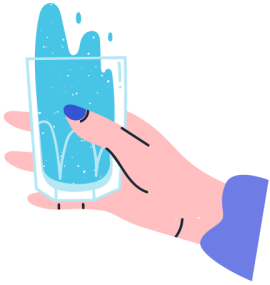The Ultimate Guide to Facebook Lookalike Audience: Everything You Need to Know [2022]
With many businesses contending for customers on social media, particularly Facebook, advertising doesn’t get any easier. Presently, 92 percent of marketers advertise and strive for customers on Facebook.
Why?
Because Facebook has proven to be an effective medium for acquiring new customers and boosting conversions, you must know effective targeting strategies to get the best results out of your Facebook campaigns. Little-known targeting strategies like the use of Facebook lookalike audiences can help you generate great returns on your ads. This helps you serve your ads to people with high conversion potency.
See it as a way of targeting people with the same personality and buying patterns as your existing customers — which can boost your conversion and engagement. In this blog post, we’ll take a closer look at the Facebook lookalike audience, why it’s important for your business, and how to create one.

What’s Facebook Lookalike Audience?
Facebook lookalike audiences is a targeting option for reaching people with similar interests as your existing customers.
So instead of searching from scratch for new customers who have less possibility of buying from you, the Facebook algorithm uses your existing customers’ data and behavioural patterns to find matching profiles. Think of it as a dating or matchmaking activity where people of similar interests, values, attractions, and needs are connected. In other words, if you tell Facebook the sort of audience you want through your current customers’ data, the algorithm serves you a new audience of people with similar characteristics.
This targeting option saves you money on ad spend and the time needed in researching and building new customers from scratch. To build Facebook lookalike audiences, you’ll need to use any of the following sources:
- A website pixel — This pixel collects data of people who interact and engage with your website from which you can build lookalike audiences.
- A business page — This should be a Facebook business page with likes and followings.
- Email list — Your email list consists of email addresses and contact information of your existing customers, which is super useful for creating lookalike audiences.
With these sources, you can easily build lookalike audiences. For example, when using an email list or newsletter subscribers, you’ll need to upload the list in either a .csv or .txt file into your Facebook business suite. That way, it’s easier for Facebook to read and use the information. Also, it’s worth noting that the more information you can provide Facebook, the better the lookalike audience it can generate for you. For instance, providing information such as age, date of birth, location, phone number, state, and country — makes it much easier to target closely related audiences.
Why Facebook Lookalike Audience?
Facebook lookalike audiences are of great value in many ways. First, it helps you to easily find new customers, particularly exact match buyer personas of people likely to buy your products. Because finding customers from scratch can be daunting and often unprofitable, Facebook lookalike saves you that stress. Also, this lookalike audience generates high-quality leads with high purchasing potential for you; this is because targeting prospects similar to your existing customers can increase your conversion rates.
Finally, the Facebook lookalike audience saves you the time and money needed for finding new customers individually. In other words, you reach and acquire these similar customers at once.

When to Use Facebook Lookalike Audiences
You should start using Facebook lookalike audiences if your goals fall into any of the following:
1. Acquire quality leads
Naturally, if the quality of your leads is poor, your conversion rates will drop. However, if you acquire high-quality leads, your conversion rates will skyrocket. Lookalike audiences help you target specific audiences with high conversion power.
2. Test different custom audiences
If you want to compare the performance of two different custom audiences, Facebook lookalikes can help you achieve this. First, you’ll need to build lookalike audiences from your custom audiences and evaluate their performances. Eventually, the results will help you know areas to optimize or alter in your campaigns.
3. Increase existing customer base
To increase your current customer base, you need to acquire new customers. Lookalike audiences help you acquire these new customers easily without starting from scratch. In addition, the new customers are highly specific and of similar interests with your existing customers.

How to Create Facebook Lookalike Audience
Now you’re ready to create your first lookalike audience, head over to your Facebook business suite and login into your account, then follow the below steps:
Step 1: Go to Audiences in your Facebook ad manager.
Step 2: Navigate to create an audience dropdown and select Lookalike Audience.
Step 3: Select your audience source. Building a lookalike audience depends on sources such as website pixels, email list, and Facebook business pages. You can use any of these sources to create your lookalike audience.
On the flip side, you can choose to create a custom audience first and build your lookalike audience from it. However, an important thing to note in this step is that your audience size must be a minimum of 100 people from the same country. Else, you may not be able to create your lookalike audience. Additionally, Facebook recommends choosing between 1,000 – 50,000 of your existing customers according to engagement, total order size, lifetime value, or transaction value.
Step 4: Select the regions or countries you’d like to serve your ads. With this selection, you can target people locally and internationally. The latter allows you to test the international market so you can compare and use it effectively.
Step 5: Choose your audience size. Your audience size refers to how closely related you’d like your lookalike audience to match with the source. Usually, the size scale is between 1-10. The lesser the number, the higher the similarity. However, if you choose a higher number, Facebook will generate a broad lookalike audience with lesser similarities. Nevertheless, whether you choose a lesser number or a higher one, the key thing is to ensure it syncs with your ad objective and budget. Then, keep experimenting for the best results.
Note: Creating your lookalike audience may take between six and 24hours. And after creation, your audience will automatically refresh every three to seven days, provided your campaigns are still active

Important Tips to Note While Using Facebook Lookalike Audiences
Choose an audience source based on objectives.
When building your lookalike audiences, ensure to choose a source in line with your goals. For example, if you’re looking to boost your conversions, it’s best to build your lookalike audience using your website pixels. This will help you acquire quality leads likely to visit and buy products on your website.
Similarly, if your ad objective is to increase awareness, then building a lookalike from your Facebook business page is ideal because you want to reach people similar to your page fans and have the potential to like, comment, and share your business on social media.
Use high specific data.
As earlier mentioned, the more data you give Facebook, the more specific your audience is. So, for example, if you plug into Facebook’s business suite an email list of 500 existing customers with their age, location, phone number, and the products they purchased from you — Facebook will generate a lookalike audience with similar details.
This is why you should use your best existing customers’ data when creating your lookalike audience.
Experiment with different lookalike audience sizes
Since you’ve identified your ad objectives, it’s okay to experiment with different lookalike audience sizes. You can create two audience sizes using either a lesser or higher scale.
If you choose a 1-5% scale, your audience will closely match your source, while a 6% and above scale will give you a broad audience. But, more importantly, you can experiment and evaluate the performance of these two audiences to know which works best.
Constantly update your lookalike audience.
It’s pointless to use the information of people who no longer buy from you. You want your customers’ details to be as current as possible; otherwise, you might target people who will not buy from you.
When building your lookalike audience, target those who have recently visited your website, particularly within the last 30 to 90days. This increases your conversion chances.

Final Thoughts
Ultimately, creating and using Facebook Lookalike Audience can boost your marketing efforts. It saves you from using the trial-and-error method. Instead, you’re clear on how to acquire exact matches of your customers to boost conversions. Eventually, you’ll see high returns on investments.
For starters, creating your lookalike audience might feel a bit tricky, but it doesn’t have to. In fact, it’s pretty easy if you can follow the step-by-step approach detailed in this post. Create a buyer persona from your existing customers and use that to build your Facebook lookalike audience. For example, your audience source could be your website pixel, Facebook business page, or email list.
Alternatively, you can create your custom audiences first and build a lookalike audience from there. Ensure to give Facebook detailed information about your existing customer so that it can generate your exact match profiles.


